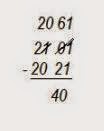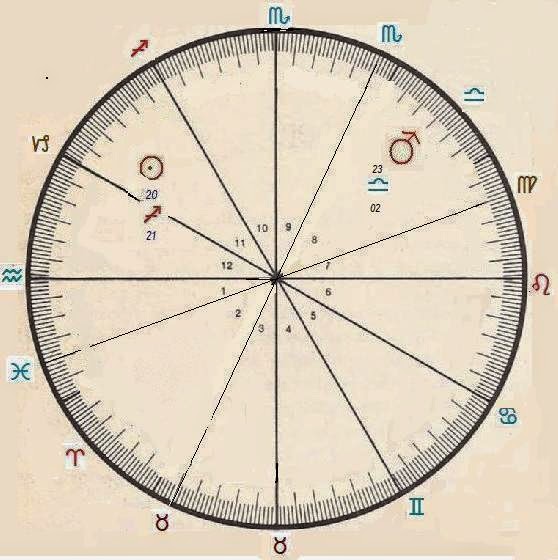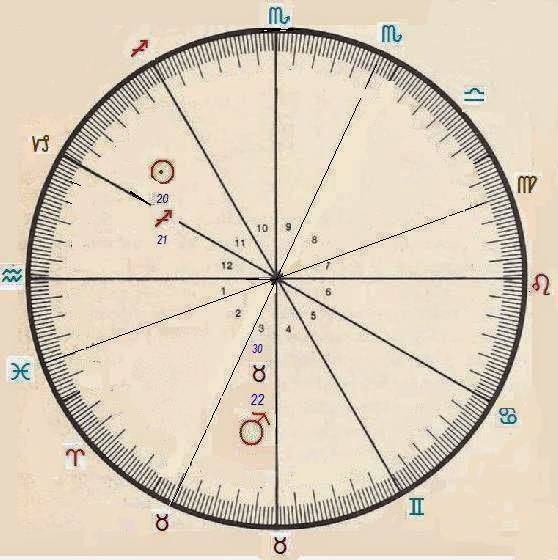Most people who study astrology on their own learn the cookbook ingredients for signs, planets, and some of the house meanings, but when it comes to aspects, they stall out. And the funny thing is, transits are easy as soon as someone shows you how. Progressions and solar arc directions are read exactly the same way; they simply represent a different time frame.
I remember being about six or seven and looking at my mom’s Dell Horoscope magazines and seeing those little symbols: a square, a triangle, an 8, a star and “that other thing.” I don’t remember if the teeter-totter had taken hold yet. I didn’t know what they meant, and the idea of learning them was daunting. So I didn’t. Not for years. And I think that’s what happens to most people who are interested in astrology. I have a well-rounded astrological library including textbooks and teaching guides by “the greats,” and when I pulled the most likely candidates from the shelves looking for information on aspects, there really weren’t any that demonstrated how to find them. Lucky you; you have the Internet. We didn’t have that when I was learning, and I had to work it out all on my own. I even drew in 360 little tick marks until I figured it out.
Once you figure out the aspects, there will be no stopping you. You’ll be reading charts by the hundreds. You’ll be reading charts for your friends and neighbors. You’ll be everyone’s new best friend. Say goodbye to your free time, say goodbye to that novel you’re writing, say goodbye to your family and furries, because as soon as you learn how to read transits, you will become an addict. You may not stop to eat or sleep for the next two years while you map out your entire future and that of your children and grandchildren. If you don’t already have an ephemeris, or any of the other essential basics, you should just go ahead and start buying them now. If you need unlimited free charts, you can’t do better than astro.com.
We are going to find the Big Five aspects, those known as the Ptolemaic aspects: the conjunction, sextile, square, trine, and opposition. We’re also going to talk about the teeter-totter, which some astrologers call an inconjunct and others call a quincunx. It means compromise, adjustment and sometimes separation. I wonder if it also means indecision? Now I wonder if a yod brings indecision times two. Hmm. More research to do. Addiction, I’m telling you.
Let’s get started.
There are twelve constellations—Aries through Pisces—and twelve houses. The constellations always contain 30 degrees. That never changes.
Houses, however, change sizes constantly, depending on our location on the earth, the season and time of day. If we use an equal house system, which we rarely do, then every house will be the same size and every house cusp will begin with the same degree and minute as the ascendant, but in successive signs, and every house will be exactly 30 degrees. The 30th degree of one sign is 0 degrees of the next. One degree rises on the ascendant every four minutes.
- 60 seconds = 1 minute
- 60 minutes = 1 degree
- 360 degrees = 24 hours
It takes only basic math to find the aspects. There are 360 degrees in a circle. Divide by 12 and the result is 30, which fits neatly with the constellations. See the illustrations below.
But, as I said, we rarely make equal house charts. So when we look for aspects, we count the number of degrees between the planets, not the number of houses or signs, although, because we know that each sign is always 30 degrees, we can use that information as shorthand. For instance, if the Sun is at 20 Aquarius 21 and Mars is at 21 Cancer 01, and we know the signs always contain 30 degrees, we can quickly sum up in our heads: Mars is 30, 60, 90, 120, 150 (Pisces, Aries, Taurus, Gemini, Cancer) degrees away from the sun, give or take a few seconds, minutes, or degrees. We rarely use seconds, either, so let’s dispense with them and make this even easier. If instead of quickly eyeballing it we want to be specific, we can subtract:
We can’t subtract 21 from 1, so we convert a degree into 60 minutes and add to the original minutes, then subtract, and the answer is 40 minutes. So in this equation, Mars is 150 degrees and 40 minutes from the Sun.
Let’s try the easiest of all, the conjunction. When two (or more) planets are conjunct, they are at relatively the same degree on the wheel, as shown below:
Even without doing the math, we can see that Mars is 24 minutes past the conjunction with the sun. Nothing could be easier.
Let’s try the next closest Ptolemaic aspect, the sextile, which means that two (or more) planets are 60 degrees apart:
In this example, we count 30 degrees from 20 Aquarius to reach 20 Pisces, and another 30 degrees from 20 Pisces to 20 Aries. So there’s our 60 degrees of a sextile. But Mars isn’t exactly at 20 degrees and 21 minutes; it’s a little bit over.
It’s 62 degrees and 4 minutes from the Sun.
Let’s go to the next one.
In this one, Mars is at 24 Taurus 59, only one minute from reaching 25 degrees Taurus. Beginning with the Sun, we count 30 degrees to get to 20 Pisces, 30 more to reach 20 Aries, and 30 more to reach 20 Taurus. That’s 90 degrees, a square. Mars is in a square aspect to the Sun. But it’s a little bit past, so let’s subtract:
Mars is 94 degrees and 38 minutes past the Sun. Next:

In this one, Mars is at 17 degrees and 53 minutes of Gemini. So we eyeball it: from 20 Aquarius to 20 Pisces is 30 degrees, from 20 Aquarius to 20 Aries is 60 degrees, from 20 Aquarius to 20 Taurus is 90 degrees, from 20 Aquarius to 20 Gemini is 120 degrees: a trine. But Mars hasn’t quite made it to 20 degrees of Gemini, so let’s subtract.
We can’t subtract 53 minutes from 21, so we convert a degree into 60 minutes and add them to the original minutes. We now have 19 degrees and 81 minutes. Now when we subtract, our answer is 2 degrees and 38 minutes, which we subtract from 120 because Mars hasn’t quite made it there yet.
We can see Mars is 117 degrees and 22 minutes from the Sun.
Moving on to the next aspect, which Ptolemy didn’t teach us, but we have discovered since, let’s return to the quincunx (also known as the inconjunct). It was the first one we counted, just before the conjunction.
We can see that Mars is 5 signs (at 30 degrees each = 150 degrees) past the Sun. And a hair over.
We can’t subtract 21 from 5, so we convert a degree to 60 minutes, add them to the original minutes, and then subtract. The difference is 44 minutes. Mars is 150 degrees and 44 minutes from the sun.
Let’s look at an opposition. The wheel is 360 degrees, right? An opposition is half of that, or 180 degrees.
In this one, Mars is at 18 degrees and 6 minutes of Leo, just short of 180 degrees.
See, it’s easy, right? But so far, you haven’t seen any aspects that are exact, or partile. There’s that little bit over, or little bit short. Are they still in aspect? Let’s talk about orbs.
Here’s a way that might help you understand them. Back when I was a kid, long before video games were invented and people became couch potatoes, we used to play outside even after dark! Sometimes we’d run around chasing each other in a game called Tag. If you got tagged, you became “It,” and had to chase other kids until you tagged one, and he became “It.” There was always a home base, and if you could reach it before you got tagged, you were “free.” Home base was usually a tree or a streetlight. The streetlight cast a big circle of light on the ground. We still had to reach the light post (become partile), but if we stepped inside the circle of light, you could say we were within orb of it. It’s the same way with the planets. They may not be in exact aspect to each other by having the exact same number of degrees and minutes, but if they’re just a few off, as in the above examples, they’re “within orb” of each other. For you cool folks, you can think of an orb as an aura around each planet. If one planet’s aura is only a few degrees, minutes or seconds difference from another planet, they’re in aspect.
We use larger orbs for the outer planets, and much tighter ones for the inner planets. As you work more with them, you’ll figure out what size orbs work best. I personally use tight ones – five degrees for the outers and two for the inners, but some astrologers use up to ten degrees. The charts I’ve shown you so far are pretty straightforward. But you may be wondering what’s up when you see a wheel like the one below:
What’s wrong with that thing?!?! Besides the fact that I have removed some tick mark degrees because they are no longer accurate, what’s “wrong” is that it contains interceptions, which means that the houses are not 30 degrees each, which in reality they almost never are. Sometimes, depending upon our location on earth, especially as we get farther from the equator and closer to the poles, the houses become very irregular sizes and some house systems break down altogether. But in most populated areas on earth, it just appears that a house (and, of course, the house opposite) swallows up an entire sign. In this chart, no degree of Aries (nor Libra) touch a house cusp. I’ve dealt with interceptions many times in this blog and am not going to do it again here. What you need to know is how this affects aspects.
It doesn’t.
In the chart above, you can see that even though the sign of Libra is swallowed up in the 8th house and Scorpio is on two house cusps, that Mars is still 60 degrees (give or take an orb) from the sun. From 23 degrees Libra to 23 degrees Scorpio is still 30 degrees, and from 23 Scorpio to 23 Sagittarius is still thirty more. While the aspect is separating because Mars has passed 20 degrees, it’s still within orb of the 60 degrees we call a sextile.
Try another one?
What do you think? Are the Sun and Mars in aspect?
From 20 degrees Sagittarius to 20 degrees Capricorn is 30 degrees. From 20 Cap to 20 Aquarius is 30 more. From 20 Aquarius to 20 Pisces is 30 more, and we’re now at 90 (square). From 30 Pisces to 30 Aries is another 30 which brings us to 120 (trine) and from 20 Aries to 20 Taurus is yet another 30 degrees, bringing us to 150 (quincunx). There’s a 2 degree and 9 minute orb and this is also a separating aspect because Mars has passed the 20th degree.
The chart below is still the intercepted chart with the degrees removed because they’re no longer accurate. But now there’s a new twist: Mars is retrograde. Keep in mind that Mars would never retrograde as far back as I have made it do here. First of all, it takes a boatload of time to create all these graphics, even if they are crappy, so to make the glyph as small as I would need to make it would be excruciating for me to do and for you to see. Secondly, it illustrates my point well, so I’m just going to leave it. I didn’t pick the beginning point of Mars’ transit for any particular reason; it had to start somewhere and that was as good a place as any.
Mars seemed to have begun this particular transit in middle Aquarius, and when it reached nearly to the end of intercepted Aries, it turned retrograde. It moved backward all the way into Capricorn, turned direct, and began to move forward once more. The question is, does it make an aspect to the sun at 20 Sagittarius, and when?
Let’s say Mars began at 15 Aquarius. It moved forward, and when it reached 20 Aquarius, it sextiled the Sun.
When it reached 20 Pisces, it squared the Sun.
When it reached 20 Aries, it trined the Sun.
Before it reached 20 Taurus, it went retrograde and began its backward trek. When it reached 20 Aries, it made its second trine to the Sun.
When it reached 20 Pisces, it made another square.
At 20 Aquarius, it made another sextile.
At 20 Capricorn, it made a semi-sextile to the Sun, but no Ptolemaic aspect. Somewhere in Capricorn, it turned direct and began to move forward again.
At 20 Aquarius, it made its third sextile to the Sun.
At 20 Pisces, it made its third square.
At 20 Aries, it made its third trine.
And when it reached 20 Taurus, it made an inconjunct to the Sun.
The point is that the interceptions make no difference at all. Remember, counting the signs between planets is only shorthand for counting degrees by 30.
Reading aspects to a single wheel chart is easy, isn’t it? I told you. But, what about when you’re reading a double wheel with the natal planets on the inside and the transits (or progressions or directions) in the outside wheel? Or a triple wheel or quadruple wheel? If you don’t mind, we’re going to stick with the double wheel. I personally don’t like to read more than two. It gets too cluttered and software generally leaves out the minutes so we don’t know if a planet is at 15 Aries 01, or 15 Aries 59, and it can make a big difference. You can play with those if you want. I know some of you like to load up your charts with every asteroid in the universe, which I think is nonsense and is like trying to read a chart that’s been put through a meat grinder. KISS.
First, let’s look at a real chart:
Anyone who recognizes this chart isn’t likely to be reading this blog post; they already know how to read charts pretty well, I would imagine. I’ll tell you in a bit who it belongs to. When we read natal or diurnal charts, we read them in a clockwise direction.
Remember that the directions in charts are exactly opposite of what they are on earth. East is to your left and south is at the top.
But when we read transits to a natal chart, the natal chart is frozen and does not move, while transits appear to move in the opposite direction, counterclockwise. In the chart below, the sun is approaching the midheaven, not separating from it. Likewise for all the other transiting planets. Transiting Uranus is approaching the 3rd house cusp. Transiting Jupiter is approaching the natal Sun.
The natal chart above is the natal chart of the United States (known as the Sibly chart), and the transits are those for the time the first plane hit the World Trade Center on 9/11. Notice the Pluto / Saturn opposition across the ascendant / descendant axis, Neptune conjunct the South Node, transiting Mercury and transiting ascendant conjunct natal Saturn, and so on.
Whether you prefer to begin with Pluto and work your way in, or begin with the Sun and work your way out, choose the transiting planet you want to start with and one by one look for aspects to the natal planets. In the chart above, the transiting Sun conjuncts natal Neptune and squares natal Mars. Transiting Mercury conjuncts natal Saturn and squares the natal Sun.
.
.
























No comments:
Post a Comment
Comments are moderated to prevent spamming. Comments containing links will not be approved.